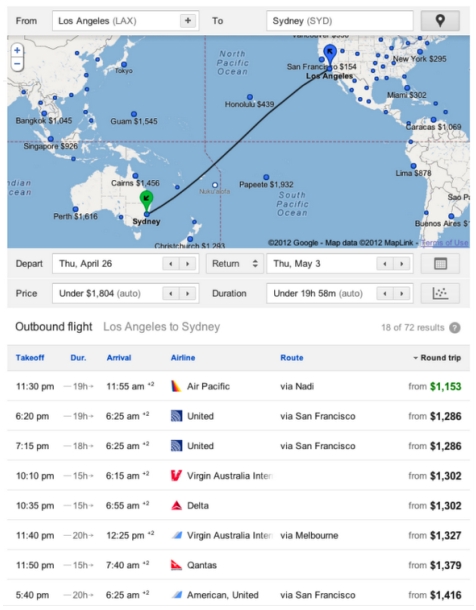Google’s Flight Search adds 500 airports outside the US
Google has strengthened its Flight Search offering by including more than 500 airports outside the US.
The company, which has been focusing on expanding its global coverage and adding more routes, shared that now its users can find flights, including international destinations, from the US.
On how the company is constantly looking at improving its offering, Eric Zimmerman, product manager explained how one can now find flights quickly and conveniently. Citing an example on a company’s blog, Zimmerman said if one would like to visit Australia but is flexible to fly into either Sydney or Perth based on whichever fare is more affordable, then a quick click over each city on the map will show the different options available almost instantly. Users can click the chart next to the dates to show alternative dates so that they can make the best choice for their trip.

Last month Google made it easier to find flights departing from the US on mobile browsers. The Flight Search feature on mobile browsers now offers all the benefits of Flight Search on desktop: Find flights quickly with results that load instantly and a list that’s easy to scan; Discover places to go on a map - see ticket prices for various destinations by surfing the map. You can filter by price, airline, or flight duration; Find the best time to go - Click the calendar icon to see what dates will get you low prices.
Next development
The industry has been waiting for Google’s moveto expand its flight search beyond North American origins. “ITA has always been a brilliant solution for searching from U.S. POS but from most Asia-Pacific markets they are missing nett fares, paper fares and web only fares as well as the all important LCC fares. This is true for a lot of Europe also,” a senior executive with a travel meta-search recently told EyeforTravel.com.
Even though Google is expected to deliver, it is being pointed out that the problem of obtaining that data won’t be, completely solved by any one single player. Existing players in this category are also looking at their own technologies, rather than being reliant on ‘traditional’ data-acquisition routes.

